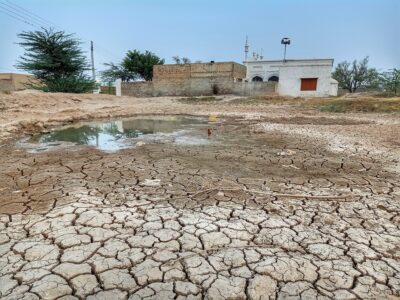
Too little water for too many people is a growing problem in poor countries–and in thriving suburban Rockland County, N.Y., just north of New York City. A new website, Water Resources in Rockland County, lays out the case, and neatly puts it into global context. The site is run by the Earth Institute’s Center for International Earth Science Information Network and Lamont-Doherty Earth Observatory, both in the Rockland town of Palisades.
Rockland abuts the west bank of the mighty Hudson River, but (like agricultural regions of India) depends mostly on groundwater, drawn through wells. With booming population, usage has grown from some 20 milliion gallons a day in 1970 to almost 32 million–the limit for sustainable withdrawal. Droughts come every seven or eight years; but wood from old trees collected by Lamont’s Tree Ring Lab show especially severe ones hit in 1570, 1630, 1700 and 1820; and future climate change is predicted to intensify both floods and droughts. Other Lamonters studying the problem include hydrologists, geochemists and geologists.
One proposed solution: draw water from the river itself. True, the Hudson is much cleaner than it used to be, due to laws that have cut industrial pollution and sewage–but it is hardly pristine, as ongoing research shows. Moreover, it is an estuary–connected to the tides, and the salt, of the sea A desalination plant has been proposed, but this is controversial because of its possible effects on the river’s ecology and remarkable natural scenery, not to mention the energy it would use–10 times more than treating water from a reservoir.
The website points out that an obvious step–reducing usage–is not part of any current plan expected to produce results. It then guides viewers just down the Palisades Parkway to New York City–where per capita water use has declined an astonishing 40% since 1980. The city has saved 685 million gallons a day, even as it population has grown 15%, through an aggressive program of detecting and fixing leaky mains, offering incentives to install low-flow toilets and other fixtures, and forcing apartment buildings and homeowners to install meters. It is a great, unheralded, conservation story. While the suburbs probably cannot adopt all the measures of a dense metropolis, is there a lesson in there somewhere?




Water conversation is going to be a major issue in the near future. The government is predicting 46 states will face water shortages over the next 5 years. Toilets waste more water than any other appliance in the home. Low flow and dual flush toilets are great products for conserving water.
Please note that the web site “Water Resources in Rockland County” is funded by the National Institute of Environmental Health Sciences (NIEHS) Superfund Basic Research Program(SBRP)through a grant to the Columbia University SBRP Research Translation Core.